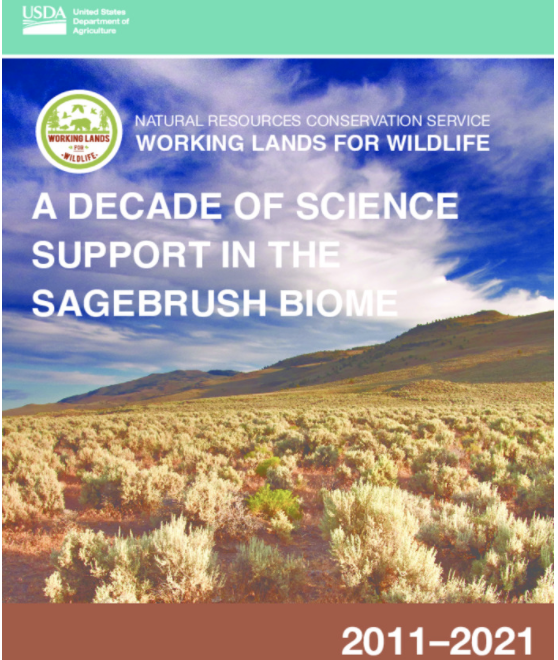Full Research Publication Here
Working Lands for Wildlife (WLFW) invests in science to proactively target conservation investments and quantify outcomes. This report summarizes more than a decade of WLFW science’s current understanding of identified sagebrush biome threats on western working rangelands and how best to address them through voluntary conservation actions. More than 350 plant and animal species are benefitting from this conservation, notably sage grouse, sagebrush songbirds, and migratory big game populations. 61 peer-reviewed publications are referenced in the report that are helping guide targeted conservation of the sagebrush biome, conserve core areas, along with scientifically quantifying outcomes.

